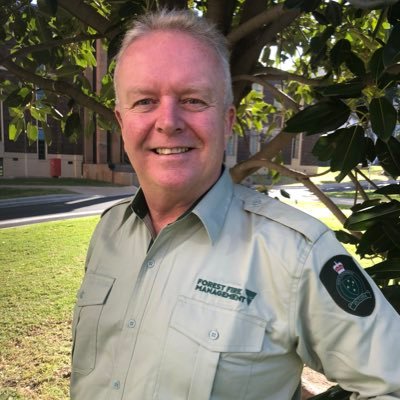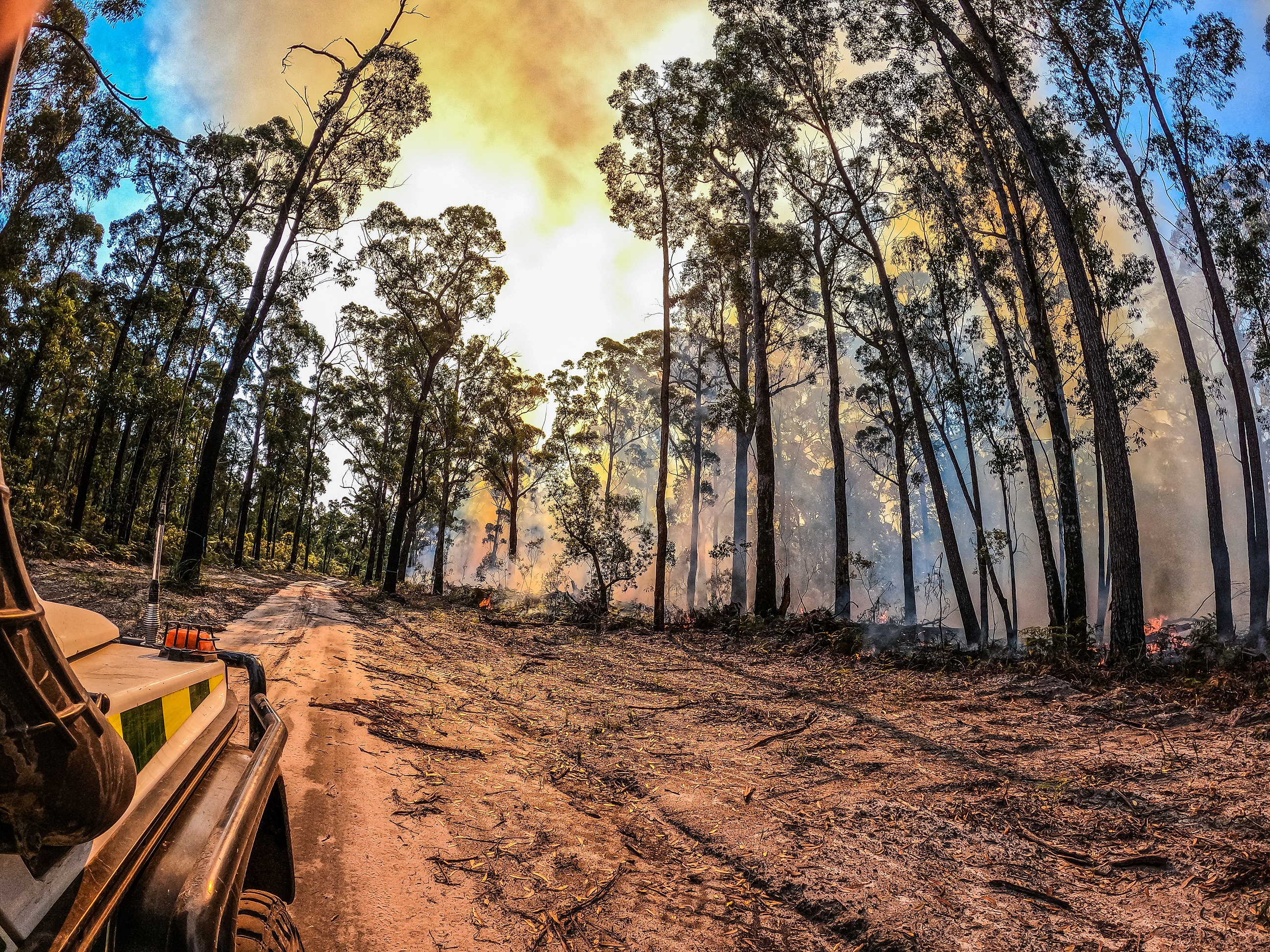Living in Victoria means living with fire. We know Victoria is one of the most bushfire-prone areas in the world. Our commitment at Forest Fire Management Victoria (FFMVic) is to be a world leader in forest and fire management.
We use the best-available knowledge to inform decisions about our activities and resources, to reduce bushfire risk, and protect the values our community holds dear. This includes our natural environment, the critical infrastructure and industries that contribute to the livelihoods of Victorians, as well as protecting private property and lives.
This year, the Intergovernmental Panel on Climate Change reported that the south-eastern corner of Australia is particularly vulnerable to climate change impacts. Also, research by the Commonwealth Scientific and Industrial Research Organisation found that hotter temperatures and lower levels of rainfall will contribute to a significant increase in the number of days per year where the fire danger rating will exceed very high, severe, or catastrophic thresholds. FFMVic is responding to this evidence with an advanced bushfire management strategy, which you will read about in this report.
Chris Hardman, Chief Fire Officer

With responsibility for managing eight million hectares of public land- nearly one-third of our state- our responsibility to protect ecological values, resources, and communities, is strengthened by the knowledge that climate change will increase bushfire risk in Victoria.
I would like to acknowledge and thank the numerous partnerships and collaborations that we draw on to deliver our bushfire management program. From the FFMVic partners - Parks Victoria, VicForests, the Department of Jobs, Precincts and Regions, Melbourne Water and the Department of Environment, Land, Water and Planning, to sector partners - the County Fire Authority, Emergency Management Victoria, Fire Rescue Victoria, the State Emergency Service and local governments. By working together, and closely with local communities and industries, we are able to deliver tailored approaches that build on strengths and reflect local needs.
I would also like to acknowledge our growing partnerships with Victorian Traditional Owners and our commitment to supporting self-determination, highlighted by the first dedicated funding to enable Traditional Owner led cultural burning on Country.
Fire season 2020–2021: an overview
The 2020–21 fire season was milder than the previous year due to the onset of the La Niña weather pattern in the latter half of 2020. This meant temperatures were cooler, and rainfall was higher than in previous years. Despite this, our firefighters attended 1,435 bushfires covering over 7,500 hectares in 2020–21, a welcome reduction to the 1.5 million hectares impacted by bushfires in the previous year.
While our personnel were less occupied with fighting fires than during the previous fire season, this season our teams supported Victoria’s response to the COVID-19 pandemic. FFMVic base camps accommodated 1,000 Victoria Police staff, and we provided staff to support 12 border checkpoints over the Christmas-New Year period. Due to scrupulous observation of physical distancing and other safety policies, there were no virus outbreaks in these base camps.
Fuel management to reduce bushfire risk
Fuel management is a key component of how we protect communities from bushfires spreading and burning more intensely. Fuel management programs assist in making suppression more achievable and safer for our crews, while also helping to reduce the impact of bushfires on community and the environment.
Although FFMVic is responsible for managing public land in Victoria, bushfires do not discriminate between public and private land, which is why we work closely with partner agencies, the broader sector, and local communities to manage bushfire risk.
We take a 365-day approach to fuel management in Victoria’s forests and parks, which involves planned burning and mechanical fuel treatments, such as mulching, mowing and slashing. We construct strategic fuel breaks between bushland and residential areas to reduce the likelihood that fires will endanger people’s homes, and we upgrade and maintain the public land road network to support our integrated land and bushfire management activities.

Reducing bushfire risk to life and property through planned burning, eastern Victoria
Fuel management delivery in 2020–21
The combination of a below average fire season and favourable weather conditions resulted in the successful delivery of over 152,000 hectares of fuel management across 2020-21. The successful delivery of the program was a result of strong planning and favourable weather conditions from late February through to June, allowing an early start and a later finish to the planned burn program.
We delivered planned burns on 133,195 hectares of land, including 74 per cent of high priority burns in key landscapes and areas closest to communities. Additionally, we treated 18,888 hectares of public land with mechanical fuel treatments including mulching, mowing, and slashing. We also constructed and upgraded 544 kilometres of strategic fuel breaks across the state.
The combined result of this work is that Victoria ended 2020–21 with bushfire risk level of 63 per cent, down from a projected 67 per cent, and below the statewide bushfire risk target of 70 per cent.
Reducing bushfire risk in a changing climate
In the 2021–22 State Budget, the Victorian Government committed half a billion dollars to support bushfire management and prevention. In partnership with other emergency management agencies, FFMVic is implementing the recommendations of the Inspector-General for Emergency Management’s Inquiry into the 2019–20 Victorian Fire Season, and the Victorian Auditor-General’s Office Reducing Bushfire Risk independent assurance report to Parliament.
The following five pillars underpin our approach to reducing bushfire risk:
1. Advanced fuel management. This annual report contains several examples of how we use various fuel management techniques to reduce bushfire risk, some of which I have already mentioned.
2. Enhanced capacity and capability to control and prevent fires. Our ability to contain fires at first attack is strengthened by having the right people deployed at the right time and with the right tools. We work closely with the Bureau of Meteorology and fire towers to inform our preparedness and firefighting operations. Capability-building and resourcing support our personnel to contain a fire at the first attack, which is when a fire spreads to less than 5 ha of land.
3. Applied understanding of fire behaviour on risk and ecology in a challenging climate. Predicting fire behaviour and interpreting how that behaviour will affect communities, critical infrastructure and ecological values is a key part of our work. This information is incorporated into our fuel management initiatives to ensure we’re carrying out operations in the most effective areas. Also, we use fire as an ecological tool to support biodiversity by restoring native plants that provide food and shelter to animals and maintain equilibrium in the landscape.
4. Increased support for cultural fire. We enable and support Traditional Owners to use cultural fire on Country in self-determined ways. The objectives of cultural fire are different for each mob, and we aim to amplify the voices of Traditional Owners who hold cultural fire knowledge. I encourage anyone seeking further information about cultural fire to read the Victorian Traditional Owner Cultural Fire Strategy.
5. Working in partnership to protect communities. We work with land and fire agencies, local governments, and communities across Victoria to enhance community resilience to bushfires and reduce risk. Our approach includes community-based bushfire management, which involves consultation with and advice from communities who live in high-risk fire areas.
![]()
Chris Hardman
Chief Fire Officer, Forest Fire Management Victoria
Page last updated: 23/12/21